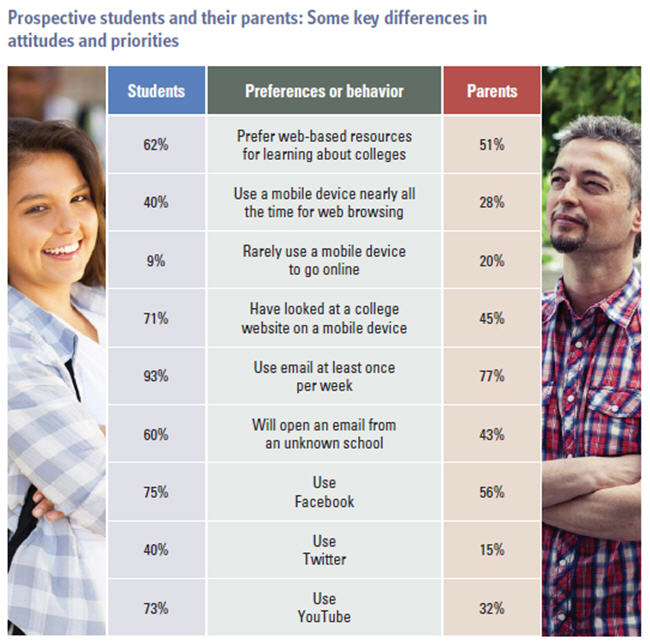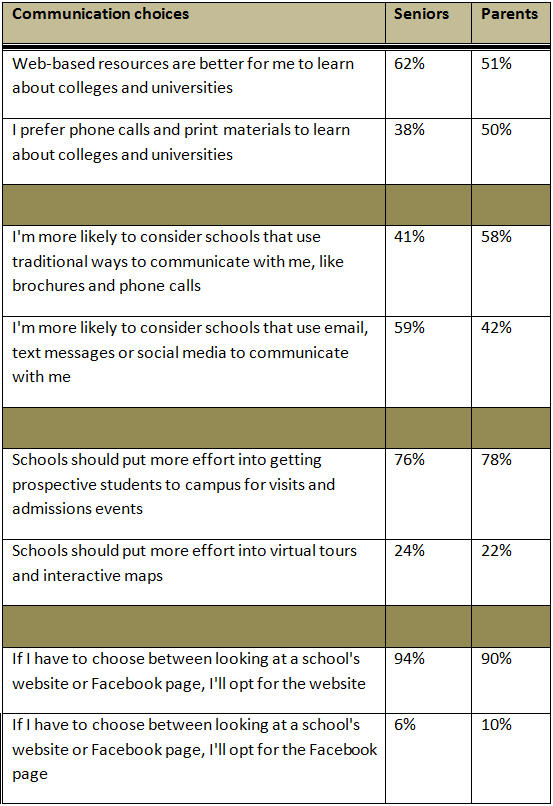enrollment
Communicating with college-bound students and their parents: New findings from E-Expectations
Earlier this spring, Noel-Levitz, OmniUpdate, CollegeWeekLive, and NRCCUA conducted our annual E-Expectations survey. This is the ninth year we have done it (we’re already making plans for the tenth next year!), and as we have done every few years, we included parents in our study. The helicopter parent has been a mainstay of college admissions for years, and the era of social media, mobile devices, and constant contact appears to have made it easier for those parents to hover.
While campus personnel may sometimes wish parents were less involved in the lives of students, it’s also true that as parents have become more involved in the admissions process, they also have become advocates for campuses. Colleges and universities now have many, many ways to recruit parents in addition to recruiting students.
So how do we reach parents? The 2014 E-Expectations Report offers insight by looking at the differences between parents and students. The report touches on a wide range of topics—webpages, email, social media, and the influence of resources. The following graphic summarizes some of the more significant and interesting differences:

Notice how students reported a much higher tendency to use email than the parents in the study did. The report has a number of findings like this that may surprise you.
Take a look at that first item as well. While students preferred web-based resources for learning about college more than parents did, half of parents also expressed that preference. Other communication preferences shed light on differences but also some strong agreement between students and parents. In the following items, respondents were asked to choose between a pair of communication preferences.

It’s interesting to see how parents are embracing e-communications, yet in the second pair of choices about traditional communications, nearly 60 percent still communicated preferences for old-school marketing and recruiting: brochures and phone calls. Not only that, but 40 percent of students did too.
The last item also raises an interesting point. The advent of social media was seen as a death knell for email. Students were expected to abandon email for communicating via social networks, and there were questions about whether websites would remain viable. Yet overwhelmingly, students and parents expressed a preference for good website experiences. As the report also shows, they still use email regularly and will open email messages from any school they are considering and many they aren’t.
These results (and many more found in the full report) indicate that admissions marketing must still offer a rich blend of communications to prospective students and their families. With an effective website in place, email, social media, and even telecounseling and print pieces can work together to help deliver the value proposition messages your campus offers and engage users with tools that allow them to interact with your staff, faculty, and current students.
I encourage you to download the full report and see what we found about mobile use, social media preferences, and new frontiers for college e-recruitment like paid interactive marketing. You’ll find data and strategies for connecting with students as well as their parents. I welcome your questions and comments, too, so please email me if you’d like to discuss the findings or strategies for extending your online reach with both of these audiences.
